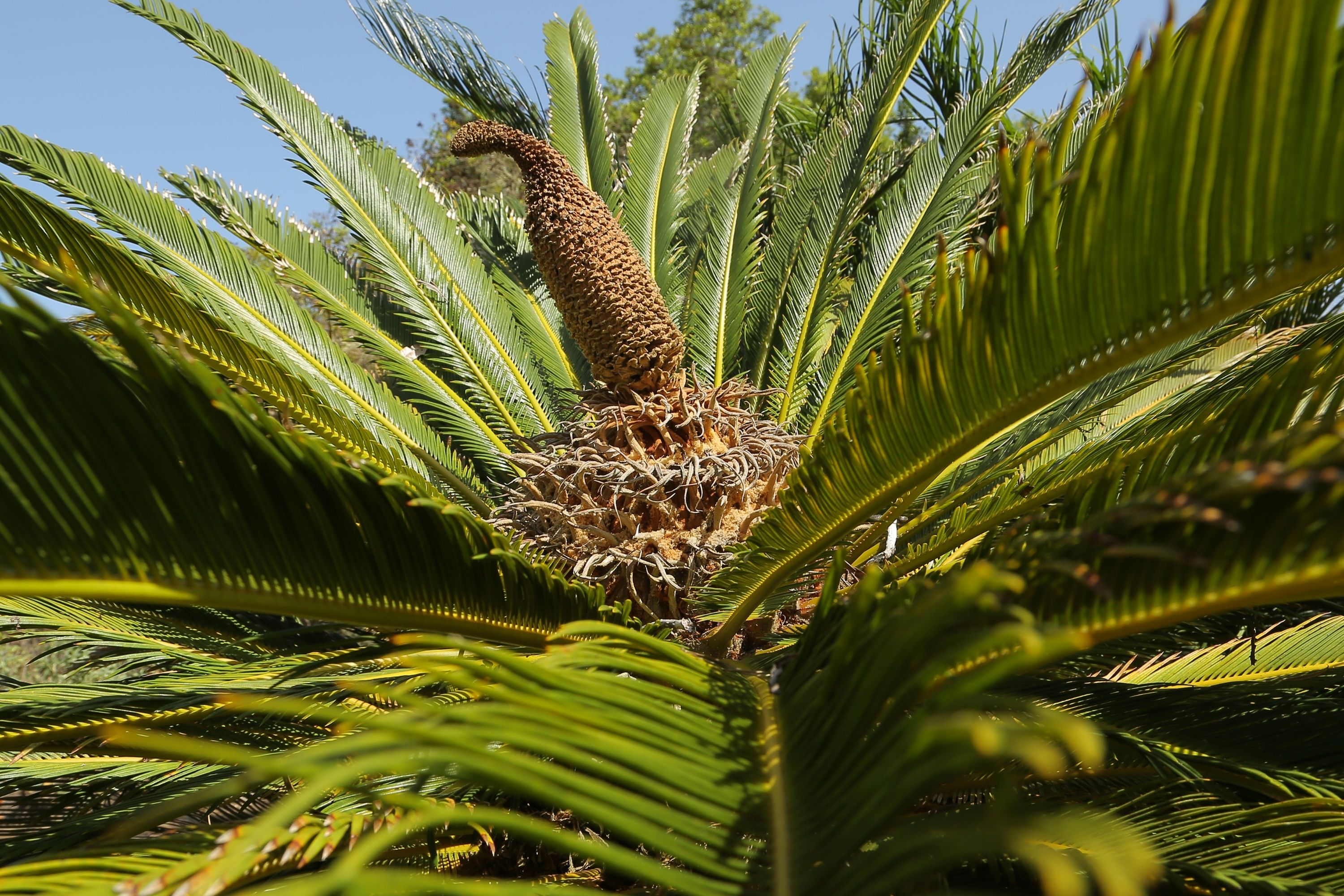Sago palm
(Cycas revoluta)

Description
Cycas revoluta is a species of cycad that belongs to the family Cycadaceae. It is commonly known as the Sago Palm, although it is not a true palm. This species is native to the southern regions of Japan, where it is widely cultivated as an ornamental plant due to its striking appearance and easy maintenance. Cycas revoluta is an ancient plant that has been around for more than 250 million years, making it one of the oldest plant species on Earth. Taxonomy: Cycas revoluta was first described by the German botanist Johann Georg Christian Lehmann in 1834. The genus name, Cycas, comes from the Greek word "kykas" meaning "palm" or "cycad," while the species name, revoluta, comes from the Latin word "revolutus," meaning "rolled back." This name refers to the way the leaflets are twisted back upon themselves. Description: Cycas revoluta is a slow-growing, evergreen plant that can reach a height of up to 3 meters (10 feet) in its natural habitat. In cultivation, it typically grows to a height of 1-2 meters (3-6 feet) and has a spread of about 1-1.5 meters (3-5 feet). The plant has a single, stout trunk that can be up to 30 cm (12 inches) in diameter and is covered in rough, scaly bark. The leaves of Cycas revoluta are large and pinnate, with a length of up to 2 meters (6 feet) and a width of up to 50 cm (20 inches). The leaflets are dark green and leathery, with a slightly glossy finish. They are arranged in a spiral pattern along the stem and are twisted back upon themselves, giving the leaves a unique appearance. Cycas revoluta is dioecious, meaning that male and female reproductive structures are borne on separate plants. The male plants produce cones that are cylindrical in shape, while the female plants produce cones that are more rounded. The cones are typically 20-30 cm (8-12 inches) in length and can contain up to several hundred seeds. Cultivation: Cycas revoluta is a popular ornamental plant in gardens and indoor spaces due to its attractive appearance and low maintenance requirements. It is suitable for growing in USDA hardiness zones 8-10, which have mild to warm climates with moderate humidity. The plant prefers well-draining, sandy soil and does best in full sun or partial shade. Propagation of Cycas revoluta is typically done through seed germination or vegetative propagation. Seeds can take up to six months to germinate and should be planted in well-draining soil and kept moist but not waterlogged. Vegetative propagation can be done by removing offsets, or pups, from the base of the plant and planting them in a separate container. Care: Cycas revoluta is a low-maintenance plant that requires little care once established. It should be watered regularly but not over-watered, as this can lead to root rot. The plant should be fertilized during the growing season with a slow-release fertilizer to promote healthy growth. It is also important to remove any dead or damaged leaves to prevent the spread of disease. Pests and Diseases: Cycas revoluta is relatively pest and disease-free but can be susceptible to scale insects and mealybugs. These pests can be controlled by using insecticidal soap or oil sprays. The plant can also be affected by fungal diseases, such as leaf spot and root rot, which can be prevented by keeping the plant well-drained and removing any infected leaves.
Taxonomic tree:







